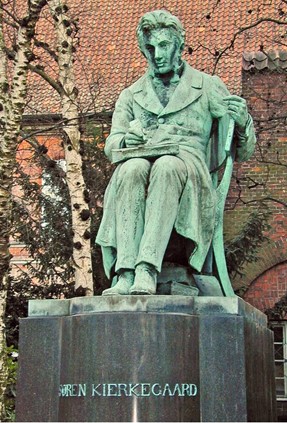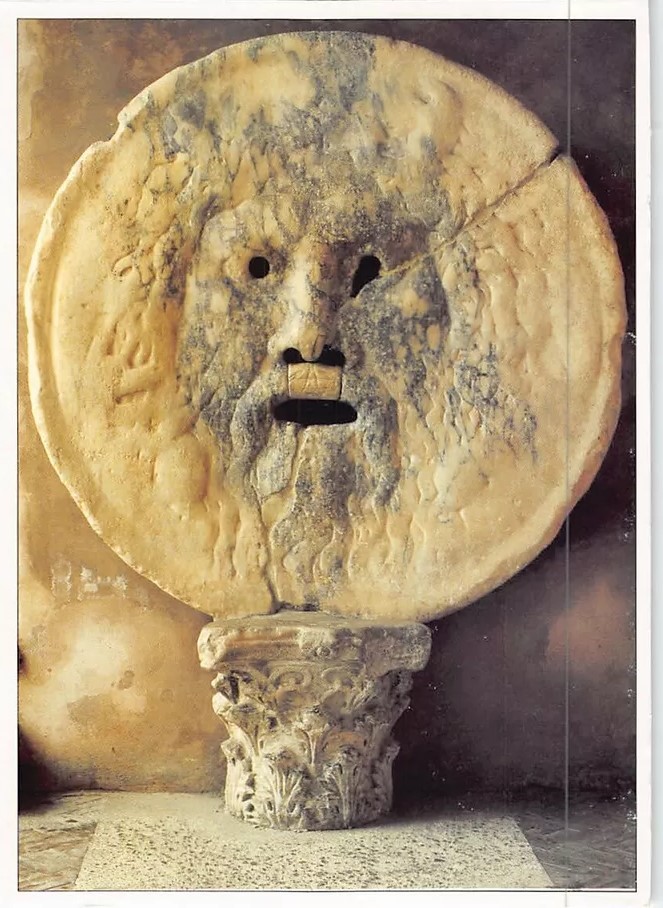[Editor’s note: I have two Danish friends, she is a college professor of Philosophical Theory; he is the fire chief of a city of 35,000 in the Sjaelland region, to the south-west of Copenhagen. The Danes are a very proud people, and they hold in very high regard their national heroes; two of which are Hans Christian Anderson and Soren Kierkegaard.]
The Storyteller or the Philosopher?
These postcards are modern 4” x 6” chromes that were purchased in a Copenhagen Hotel gift shop around 2013. At left is the Hans Christian Andersen statue in a park setting across the street from the Tivoli Gardens. On the right is the Kierkegaard statue in the garden of the Royal Danish Library in Copenhagen. It may be fun to notice the “shine” on Andersen’s knee that is testimony to the number of children who have sat there to have their pictures taken.
***
In August 2023 and of late, my friend has been conducting a very sophisticated survey on “Truth.” Over a year ago, she mailed copies of the survey to over 1,000 people of which I am one. Recently a summary-narrative was published and there are no surprises.
The first and second questions in the survey pertain to belief:
- “What is easier to believe? Something you are told by someone you know, or by someone you don’t know?”
- “What is easier to believe? What you see; or what you hear?”
Andersen and Kierkegaard both figure into the mix in subsequent questions, but for the sake of purpose and brevity let’s move to the examination of question 2. And, I quote,

”This question comes from a recent study of the parables used by the Danish philosopher and poet Soren Kierkegaard, who is highly regarded as the most complex thinker of the 19th century.”
“A worthwhile example of how to develop an answer to the survey questions is Kierkegaard’s parable about a life-threatening fire.
It happened that a fire broke out backstage in a crowded theatre featuring a play about a circus. The clown was selected from among the cast members to announce the fire and encourage the audience to evacuate without hesitation. The public believed his speech to be part of the show and when he finished, they cheered and applauded. The clown repeated his warning and the audience cheered even louder. Ergo this leads many to believe that the world will end with all the applause coming from wits who believe that life is a joke.
“Søren Kierkegaard’s parable of the theatre fire illustrates the tension between the individual and society. Imagine that crowded theatre, where audience members are engrossed in the performance. Suddenly, a fire breaks out, and chaos is threatened. While some rush to safety, others remain fixated on the show, unwittingly risking their lives. Kierkegaard uses this scenario to highlight the absurdity of conformity and the importance of personal belief, value, and responsibility.
“In the parable, the audience’s collective inertia symbolizes the way individuals often succumb to social pressures, choosing to ignore personal instincts and ethical duties. They become spectators not just of art but of life itself, paralyzed by the fear of disrupting the status quo.
“The fire in the parable serves as a metaphor for crises that compels each individual to confront a deeper truth, which prompts a choice between a trivial existence or profound one.
“Kierkegaard’s reflection is a call to awaken from the complacency of a crowd and make personal choices with moral courage, even when it means going against society or even our loved ones.
“Any further explanation of the parable is unnecessary; there is no right or wrong answer. You are the audience. You heard the announcement, but what you heard came from a clown. Does any of this sound familiar? If it is familiar, the only question left is who do you (or can you) believe?
“Truth is unrelenting. It, like most things in life, is constant and regardless of who says what on television or writes in a newspaper, there are no alternative facts. Perhaps the spiritual leader of over three billion people said it best, “the truth will set you free.”
***
Perhaps this is the only Truth Teller left.

The Mouth of Truth is an ancient Roman marble mask
in the Santa Maria in Cosmedin church, Rome, Italy.

I probably would have believed the clown’s speech was part of the show until I either felt the heat of the fire or saw the flames.
Is it a coincidence that the third article this week is about artificial intelligence?